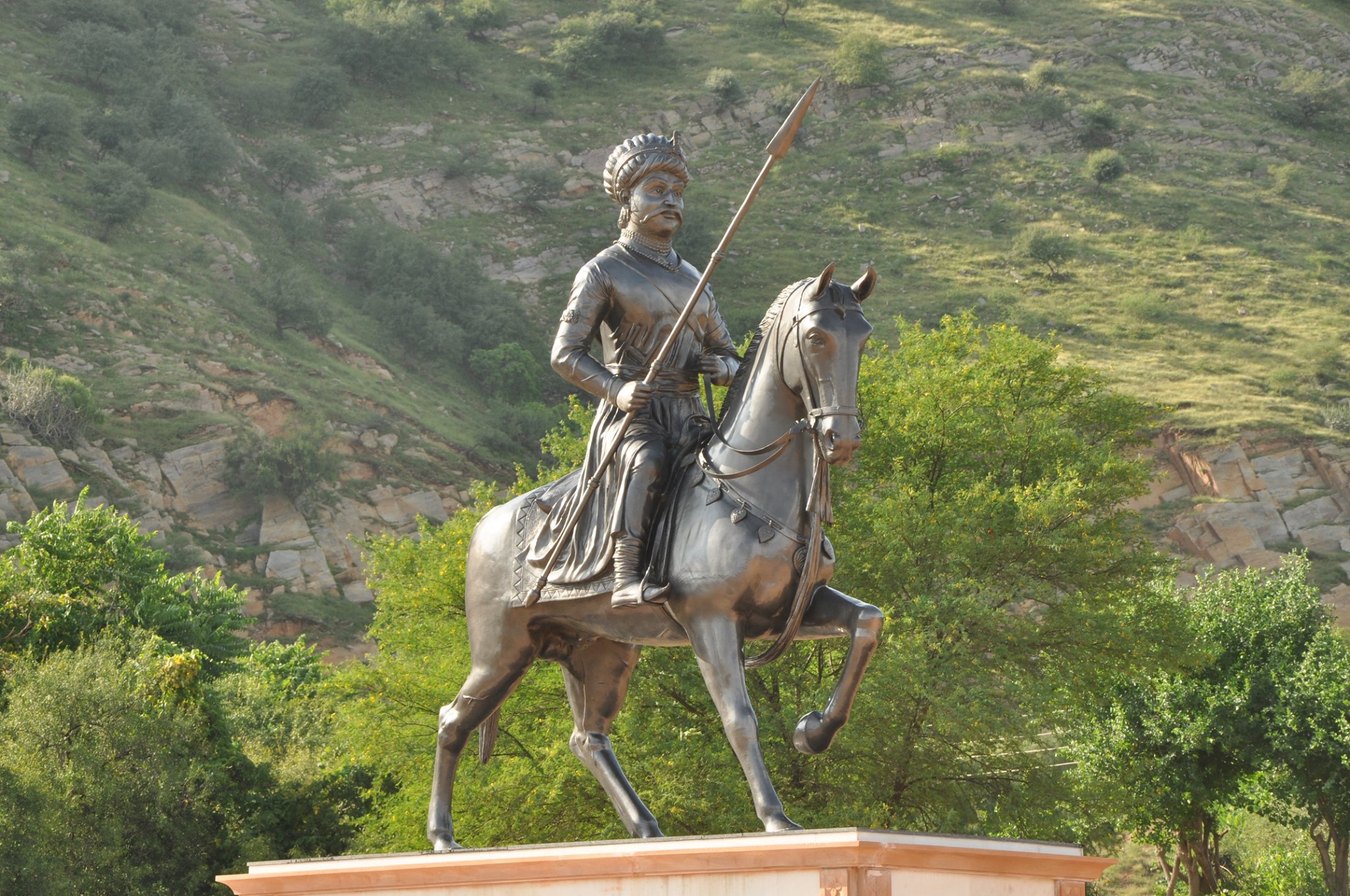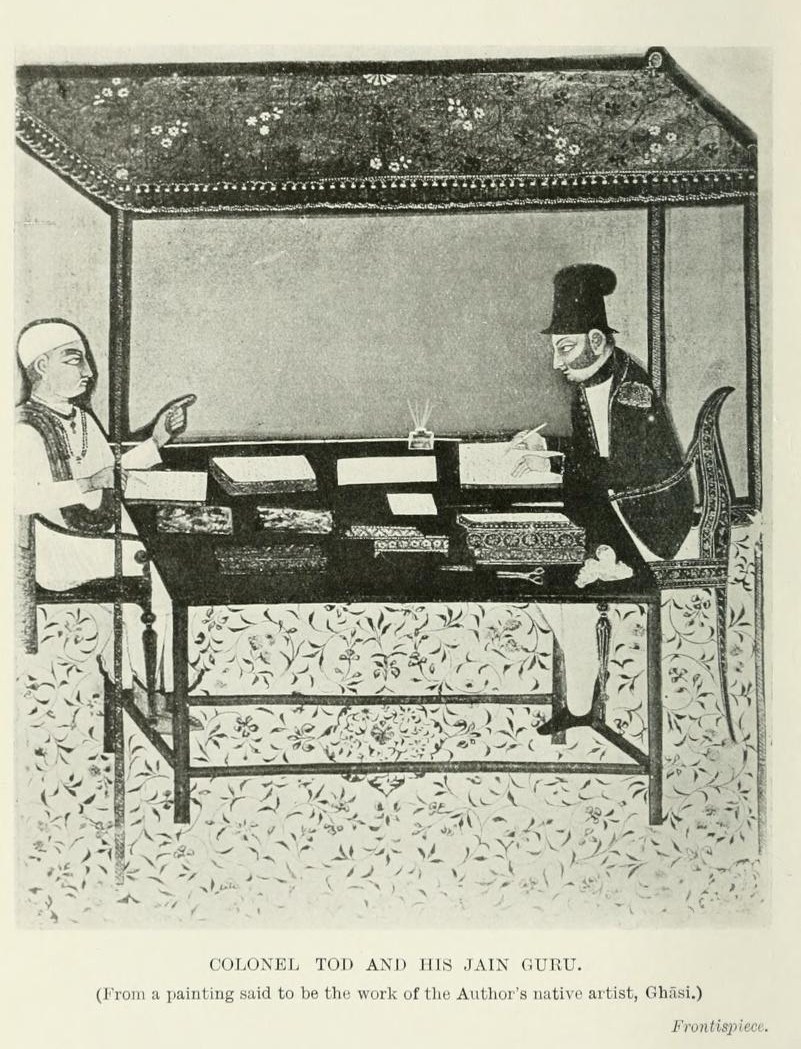|
Shekhawati
Shekhawati is a semi-arid historical region located in the northeast part of Rajasthan, India. The region was ruled by Shekhawat Rajputs. Shekhawati is located in North Rajasthan, comprising the districts of Jhunjhunu district, Jhunjhunu, parts of Sikar district, Sikar that lies to the west of the Aravali Range, Aravalis and Churu district, Churu. It is bounded on the northwest by the Jangladesh region, on the northeast by Haryana, on the east by Mewat, on the southeast by Dhundhar, on the south by Ajmer district, Ajmer, and on the southwest by the Marwar region. Its area is 13784 square kilometers.Taknet, D.K, Marwari Samaj Aur Brijmohan Birla, Indian Institute of Marwari Entrepreneurship, Jaipur, 1993 p 78 In the 17th to 19th centuries, Marwari people, Marwari merchants constructed grand havelis in the Shekhawati region. Steeped with wealth and affluence, the merchants attempted to outdo others by building more grand edifices – homes, temples, and step wells which both i ... [...More Info...] [...Related Items...] OR: [Wikipedia] [Google] [Baidu] |
Shekhawati Dialect
Shekhawati is an Indo-Aryan language of north-eastern Rajasthan, India. It belongs to the Rajasthani languages and is spoken by an estimated three million people in the Shekhawati region, which comprises the Churu, Jhunjhunu and Sikar districts. A descriptive grammar of Shekhawati was published in 2001. The word order of the language is typically SOV, and the phonology is characterised by the presence of implosive consonants and a distinct high tone Tone is the use of pitch in language to distinguish lexical or grammatical meaning – that is, to distinguish or to inflect words. All verbal languages use pitch to express emotional and other paralinguistic information and to convey emph .... References Languages of Rajasthan {{IndoAryan-lang-stub ... [...More Info...] [...Related Items...] OR: [Wikipedia] [Google] [Baidu] |
Shekhawat
Shekhawat is a clan of Rajputs found mainly in Shekhawati region of Rajasthan. Shekhawats are descendants of Maharao Shekha of Amarsar. Shekhawat is the most prominent clan among Kachhwaha. The Shekhawati region was ruled by them for more than 500 years. Fought against mughals many time. Rao Sujjan Singh of Chhapoli fought mughal army with 300 men to save temple. Yudhveer Singh Shekhawat is French face of Rajasthan Notable people * Bhairon Singh Shekhawat former Chief minister of Rajasthan and former Vice president of India. *Gajendra Singh Shekhawat the present Union Cabinet Minister in Ministry of Jal Shakti. *Piru Singh Shekhawat *Ajit Singh of Khetri of the Shekhawat clan helped the Swami Vivekanand by giving financial help *Brigadier Saurabh Singh Shekhawat Legacy Shekahwats constructed many forts and temples, step well(bawdi) in Shekhawati region and patronized Hindu culture. There are more than 50 forts constructed by them. Shahpura, Alsisar, Bissau, Dundl ... [...More Info...] [...Related Items...] OR: [Wikipedia] [Google] [Baidu] |
Havelis
A ''haveli'' is a traditional townhouse, mansion, manor house, in the Indian subcontinent, usually one with historical and architectural significance, and located in a town or city. The word ''haveli'' is derived from Arabic ''hawali'', meaning "partition" or "private space", popularised under the Mughal Empire, and was devoid of any architectural affiliations. Later, the word ''haveli'' came to be used as a generic term for various styles of regional mansions, manor houses, townhouse found in the Indian subcontinent. History Origin The term ''Haveli'' originates from Arabic word ''hawali'', meaning "partition" or "private space", term which was popularized under Mughal Empire. Early Havelis served Muslim rulers of the Indian Subcontinent and became an important architectural component of urban environments under the Mughals. Although Havelis originate from Indo-Islamic architecture, the existence of multistory homes and courtyards in the region is claimed as early as 3 ... [...More Info...] [...Related Items...] OR: [Wikipedia] [Google] [Baidu] |
Rajasthan
Rajasthan (; lit. 'Land of Kings') is a state in northern India. It covers or 10.4 per cent of India's total geographical area. It is the largest Indian state by area and the seventh largest by population. It is on India's northwestern side, where it comprises most of the wide and inhospitable Thar Desert (also known as the Great Indian Desert) and shares a border with the Pakistani provinces of Punjab to the northwest and Sindh to the west, along the Sutlej- Indus River valley. It is bordered by five other Indian states: Punjab to the north; Haryana and Uttar Pradesh to the northeast; Madhya Pradesh to the southeast; and Gujarat to the southwest. Its geographical location is 23.3 to 30.12 North latitude and 69.30 to 78.17 East longitude, with the Tropic of Cancer passing through its southernmost tip. Its major features include the ruins of the Indus Valley civilisation at Kalibangan and Balathal, the Dilwara Temples, a Jain pilgrimage site at Rajasthan's only hill stat ... [...More Info...] [...Related Items...] OR: [Wikipedia] [Google] [Baidu] |
Shekha Of Amarsar
Maharao Shekhaji (1433–1488) was a shtriya (Rajput) King in 15th-century India. He is the namesake of the Shekhawati region, comprising the districts of Sikar, Churu and Jhunjhunu in the modern Indian state of Rajasthan. His descendants are known as the Shekhawat. Birth On Rao Mokal's Death in AD 1445, the twelve year old Maharao Shekhaji Succeeded his father's estates at Amarsar. His parents are said to have sought prayers from a pir Sheikh, after whom Shekhaji was named. Shekhaji succeeded as the head of the Nayan and Barwada estate, along with 24 more villages, at the age of 12, as a result of the untimely death of his father Mokal Ji in 1445. Life When Shekhaji inherited his father's estate, his reputation and power attracted the jealousy of the Lord Paramount of Amber. He was attacked, but thanks to the aid of the Punnee Pathans he successfully withstood the reiterated assaults of his suzerain lord. Up to this period they had acknowledged the Amber princes as liege ... [...More Info...] [...Related Items...] OR: [Wikipedia] [Google] [Baidu] |
Aravali Range
The Aravalli Range (also spelled ''Aravali'') is a mountain range in Northern-Western India, running approximately in a south-west direction, starting near Delhi, passing through southern Haryana, Rajasthan, and ending in Ahmedabad Gujarat. The highest peak is Guru Shikhar on Mount Abu at . The Aravalli Range is arguably the oldest geological feature on Earth, having its origin in the Proterozoic era. The Aravalli Range is rich in natural resources and serves as check to the growth of the western desert. Etymology Aravalli, a composite Sanskrit word from the roots ''"ara"'' and ''"vali"'', literally means the ''"line of peaks"''. Natural history Geology The Aravalli Range, an eroded stub of ancient mountains, is believed to be the oldest range of fold mountains in India.Roy, A. B. (1990). Evolution of the Precambrian crust of the Aravalli Range. Developments in Precambrian Geology, 8, 327–347. The natural history of the Aravalli Range dates back to times when ... [...More Info...] [...Related Items...] OR: [Wikipedia] [Google] [Baidu] |
Jhunjhunu District
Jhunjhunu district is a district of the Indian state of Rajasthan in northern India. The city of Jhunjhunu is the district headquarters. District location The district falls within Shekhawati region, and is bounded on the northeast and east by Haryana state, on the southeast, south, and southwest by Sikar District, and on the northwest and north by Churu District. Demographics According to the 2011 census Jhunjhunu district has a population of 2,137,045, roughly equal to the nation of Namibia or the US state of New Mexico. This gives it a ranking of 214th in India (out of a total of 640). The district has a population density of . Its population growth rate over the decade 2001-2011 was 11.81%. Jhunjhunun has a sex ratio of 950 females for every 1000 males, and a literacy rate of 74.72%. Scheduled Castes and Scheduled Tribes make up 16.88% and 1.95% of the population respectively. Languages Shekhawati a dialect of Rajasthani Language and Hindi are mainly spoken lan ... [...More Info...] [...Related Items...] OR: [Wikipedia] [Google] [Baidu] |
Marwar
Marwar (also called Jodhpur region) is a region of western Rajasthan state in North Western India. It lies partly in the Thar Desert. The word 'maru' is Sanskrit for desert. In Rajasthani languages, "wad" means a particular area. English translation of the word 'marwar' is 'the region of desert.' Historically, the term 'Marwar' referred to a geographical entity spanning a cultural area across nearly all of Rajasthan. More specifically, it designates the western region of the present-day state of Rajasthan, spanning the districts of Jaisalmer, Barmer, Jalore, Jodhpur, Nagaur, Pali, Bikaner, Sikar, Churu, and Jhunjhunu. In its most contracted definition, Marwar comprises the areas governed by the erstwhile princely state of Jodhpur State, which includes the present-day districts of Barmer, Jalore, Jodhpur, Nagaur, Pali and parts of Sikar. Jodhpur State was bounded on the north by Jangladesh region, on the northeast by Dhundhar, on the east by Ajmer, on the southeast by Me ... [...More Info...] [...Related Items...] OR: [Wikipedia] [Google] [Baidu] |
Shahpura, Jaipur
Shahpura is a town and a municipality, near city of Jaipur in Jaipur district in the Indian state of Rajasthan. History Shahpura is the Head seat of the Shekhawat Rajput Clan. Maharao Shekha's Son, Raimal was given Amarsar Seat, which was the Head seat of Shekhawat. After his death, Rao Suja became his successor but he had to leave Amarsar due to Sher Shah but Amarsar was soon taken back by his son Rao Lunkaran. After him, the Ancestral seat of Amarsar was succeeded by his Son Rao Manohar. Later Shahpura, became the capital of Old Amarsar - Manorharpur line of Shekhawats in Rule of Rao Bishan Singh. Demographics India census A census is the procedure of systematically acquiring, recording and calculating information about the members of a given population. This term is used mostly in connection with national population and housing censuses; other common censuses incl ..., Shahpura had a population of 28,170. Males constitute 53% of the population and females 47%. Shahpu ... [...More Info...] [...Related Items...] OR: [Wikipedia] [Google] [Baidu] |
Amarsar
Amarsar is a village in Jaipur district, Rajasthan, India. Agriculture Amarsar has farms ranging in size from small to large. Crops raised by small farms include mustard and gram in the rabi season (planted in winter and harvested in spring) and cotton in the kharif season (between April and October, during the rainy monsoon season). Crops raised by large farms include gram and wheat during the rabi season and guar The guar or cluster bean, with the botanical name ''Cyamopsis tetragonoloba'', is an annual legume and the source of guar gum. It is also known as gavar, gawar, or guvar bean. The origin of ''Cyamopsis tetragonoloba'' is unknown, since it has ... and cotton during the ''kharif'' season. References {{Jaipur district Villages in Jaipur district Shekhawati ... [...More Info...] [...Related Items...] OR: [Wikipedia] [Google] [Baidu] |
James Tod
Lieutenant-Colonel James Tod (20 March 1782 – 18 November 1835) was an officer of the British East India Company and an Oriental scholar. He combined his official role and his amateur interests to create a series of works about the history and geography of India, and in particular the area then known as Rajputana that corresponds to the present day state of Rajasthan, and which Tod referred to as ''Rajast'han''. Tod was born in London and educated in Scotland. He joined the East India Company as a military officer and travelled to India in 1799 as a cadet in the Bengal Army. He rose quickly in rank, eventually becoming captain of an escort for an envoy in a Sindian royal court. After the Third Anglo-Maratha War, during which Tod was involved in the intelligence department, he was appointed Political Agent for some areas of Rajputana. His task was to help unify the region under the control of the East India Company. During this period Tod conducted most of the resea ... [...More Info...] [...Related Items...] OR: [Wikipedia] [Google] [Baidu] |
.jpg)





_Suresh_Godara.jpg)
